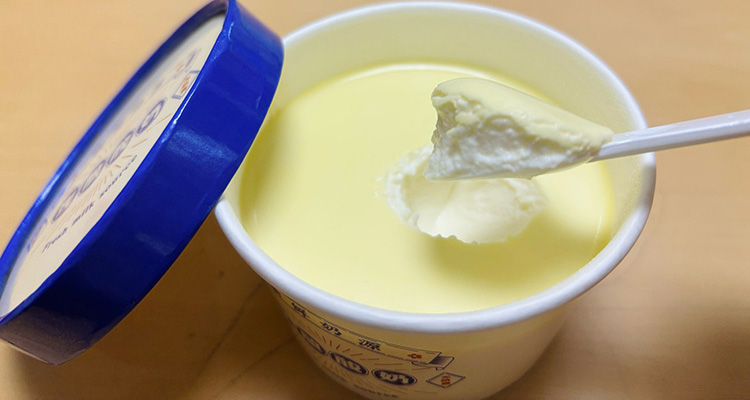Inner Mongolia Milk Skin: Grassland Dairy Delicacy
When you step onto Inner Mongolia’s vast grasslands—under blue skies, drifting clouds, with herds of cattle and sheep grazing—the air carries a faint, comforting dairy aroma. Beyond breathtaking landscapes, this region preserves a rich Mongolian dairy tradition. Among local specialties is a treasured delicacy known as milk skin, called urumu in Mongolian (乌如木), and often referred to locally as nai pi zi—the “essence of milk.”
1. Longstanding Grassland Food Heritage
Milk skin is inseparable from the nomadic lifestyle of the Mongolian people. For centuries, herders followed pasture and water, relying on livestock for most food needs. To preserve dairy longer and add variety, they developed many milk-processing techniques; milk skin is one of the finest results. Historical records indicate milk skin production dates back at least to the Yuan dynasty, giving it nearly a thousand years of continuity.
In Mongolian culture, milk skin is more than an everyday food—it’s a ceremonial treat. During Naadam festivals, weddings, or when hosting important guests, families serve carefully made milk skin as a sign of respect and welcome.
2. Concentrated Milk Goodness: Ingredients and Nutrition
Milk skin is literally the concentrated top layer of boiled milk. As locals say: “A bowl of milk’s essence condenses into a golden skin.” Making authentic milk skin starts with fresh, full-fat cow’s milk. Grass-fed cows on the steppe, drinking clear spring water, yield milk with a rich, distinctive flavor—an essential foundation for quality milk skin.
Nutritionally, milk skin contains concentrated milk components: high milk fat (often over 70% in the dried layer), quality protein, lactose, and minerals like calcium and phosphorus. Calcium content can reach 600–700 mg per 100 g—six to seven times ordinary milk—making it an excellent source. Its fats are rich in medium- and short-chain fatty acids, easier for the body to digest, and may contain beneficial conjugated linoleic acid (CLA).

3. Traditional Craftsmanship: A Patient, Skilled Process
Creating genuine Mongolian milk skin requires patience and skill. Fresh milk is poured into a wide pot and simmered slowly over a low flame—traditionally dung-fueled, now often gas or electric. Heat control is crucial: too hot and the milk boils violently, preventing a cohesive skin; too cool and fats won’t coalesce.
As milk gently simmers, a waxy, pale-yellow membrane forms on the surface. Artisans use a long, special chopstick to break bubbles and encourage even coagulation. This careful process takes one to two hours, with occasional stirring to prevent scorching while preserving the developing skin. Once thick enough, the skin is lifted and air-dried in a cool, ventilated place or frozen overnight in the grassland’s brisk nights. After 12–24 hours of drying or cold-setting, the milk skin is ready—typically irregular round pieces, 0.5–1 cm thick, with natural folds and a pale golden hue.
4. Delicate, Multi-layered Flavor and Texture
Authentic milk skin offers a unique sensory experience. Initially, it gives off a deep, natural dairy aroma—complex and reflective of grass-fed milk rather than industrial notes. The texture is silky and dense: it melts gradually in the mouth, releasing layers of flavor—first the rich creaminess of milk fat, then gentle sweetness, and finally a lingering dairy aftertaste. High-quality milk skin is full-bodied without greasiness. Each handcrafted batch varies subtly, adding to its charm.

5. Ways to Taste and Pair Milk Skin
Milk skin can be enjoyed in many ways:
- Direct tasting: Cut into small pieces and savor the pure flavor—ideal for first-time tasters.
- In salty milk tea: Break milk skin into warm, salted butter tea to soften and absorb the tea’s aroma—a traditional Mongolian method.
- As desserts: Modern treats include caramelized milk skin (fried and glazed with syrup) or rolls filled with candied fruit or nuts.
- Innovative uses: Contemporary chefs experiment with milk skin salads, pizza toppings, or hotpot additions, blending tradition with creativity.
6. Traveler Tips: Find and Taste the Most Authentic Milk Skin
For the truest experience in Inner Mongolia:
- Best season: Summer to early autumn—pastures are lush and milk quality peaks.
- Buying tips: Look for natural pale-yellow color, tight texture, and pure milky aroma. Local herders’ homemade milk skin offers the highest authenticity.
- Storage: Milk skin absorbs odors easily—store sealed in a cool, dark place; refrigeration works for short-term, consume within a week.
- Dietary cautions: High in fat and calories; those with digestive issues should eat sparingly.

7. Simple Home Method to Try
A basic home version can be made with full-fat milk:
Ingredients: 2 liters full-fat milk
Method: Pour milk into a wide, shallow pot and heat slowly on low. Let a thin film form on the surface without stirring. After about an hour, test the film with a chopstick; when thick enough, lift carefully and lay on parchment to dry 4–6 hours at room temperature. Avoid direct sunlight.
A Grassland Song on Your Tongue
Milk skin is more than a food item—it embodies Mongolian pastoral culture and the harmonious bond between people and nature. Each golden piece reflects generations of knowledge and hospitality. Taste milk skin in Inner Mongolia, and let its creamy aroma and nuanced texture transport you into the heart of the steppe. This simple delicacy may become one of your most memorable flavors from China.


